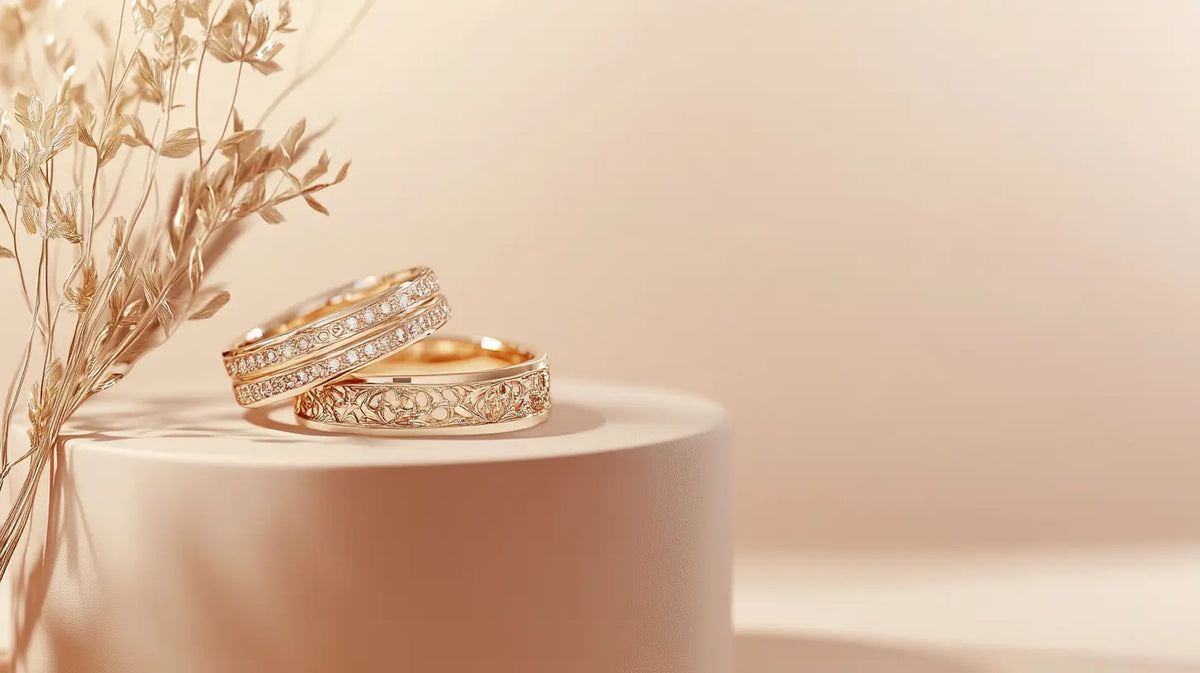
2025: A Forward Look at Bespoke Jewellery Trends in the UK
|
Time to read 7 min
|
Time to read 7 min
IN THIS ARTICLE
The bespoke jewellery sector in the United Kingdom is poised for an exciting evolution in 2025. As a harmonious blend of time-honoured craftsmanship and modern technological innovation, personalised jewellery continues to captivate fashion-forward individuals seeking unique, statement-making accessories. In this article, we explore the key trends shaping the industry, delve into emerging design philosophies, and offer insights for both connoisseurs and industry professionals. To discover a range of exquisite pieces, visit ifshe.co.uk.
One of the most significant drivers in the bespoke jewellery scene is the advent of new, sustainable materials. Designers are increasingly experimenting with recycled metals and eco-friendly alloys without compromising on luxury. Additionally, state-of-the-art techniques such as 3D printing and laser cutting are facilitating intricate designs that were once thought impossible. These technologies not only expedite the production process but also enable a higher degree of customisation, allowing for truly one-off pieces that reflect the wearer’s personality.
Among the most innovative trends is the integration of digital customisation through photo projection technology. This emerging trend can be experienced through collections like photo projection necklaces and photo projection bracelets , which showcase a fusion of modern technology with timeless design.
In 2025, a variety of design aesthetics are expected to take centre stage:
Minimalist Elegance: Clean lines and understated designs continue to hold appeal. Minimalism in bespoke jewellery is evolving, with designers integrating subtle personalisations—such as delicate engravings or small, symbolic motifs—into pared-back pieces.
Heritage Meets Modern: There is a growing fascination with combining vintage elements with modern design techniques. Expect to see jewellery that incorporates classic motifs—like Art Deco patterns or Victorian filigree—reinterpreted through a contemporary lens.
Abstract and Organic Forms: Forward-thinking designers are experimenting with asymmetry and natural inspirations, mirroring the irregular beauty of organic shapes. These pieces, often resembling works of art, challenge traditional notions of symmetry and perfection.
Furthermore, the timeless appeal of personalised items remains strong. For instance, collections such as personalised necklaces for mum are a testament to how bespoke jewellery can merge sentimentality with style.
The palette for bespoke jewellery in 2025 is set to be as diverse as it is sophisticated. Soft, muted tones paired with the occasional burst of vibrant colour are becoming increasingly popular. Notable trends include:
Pastel Accents: Think gentle blushes, soft mints, and powder blues that add a subtle, refined charm to gold and silver bases.
Gemstone Innovations: Beyond the traditional, expect to see a broader use of coloured gemstones—both natural and lab-created—that complement bespoke designs with their vivid hues and unique optical properties.
Mixed Textures: Designers are fusing polished surfaces with matte finishes to create dynamic contrasts within a single piece. This interplay of textures adds depth and interest, making each item truly one-of-a-kind.
Analysts predict a significant upswing in the customised jewellery market over the next few years, driven by:
Increasing Demand for Personalisation: As consumers continue to prioritise self-expression, the desire for jewellery that can be tailored to one’s tastes is set to grow.
Technological Advancements: Continued innovation in design and manufacturing techniques will reduce production times and costs, making bespoke jewellery accessible to a broader audience.
Sustainable Trends: The push towards ethical sourcing and environmentally friendly materials aligns with the values of a new generation of jewellery enthusiasts.
These factors suggest that both established brands and emerging designers have a valuable opportunity to capitalise on the bespoke trend in 2025 and beyond.
In summary, 2025 promises to be a landmark year for the UK's bespoke jewellery sector. The fusion of innovative materials, technological advancements, and distinctive British design sensibilities is set to redefine the market. Designers are encouraged to embrace a balance between tradition and modernity, and to consider the nuanced tastes of a discerning consumer base that values authenticity and personal connection.
Key Recommendations:
Innovate Responsibly: Leverage new materials and technologies, but always maintain a focus on quality craftsmanship and sustainable practices.
Embrace Heritage: Honour the rich history of British jewellery design while pushing creative boundaries.
Listen to Consumers: Engage with buyers through social media, feedback forums, and bespoke consultation sessions to continually refine your offerings.
Diversify Designs: Cater to a wide range of tastes by offering a spectrum of design styles—from minimalist to elaborate, traditional to abstract.
Ultimately, the bespoke jewellery market in the UK is not just about making a purchase; it’s about acquiring an heirloom, a piece imbued with personal meaning and lasting beauty. As we look forward to 2025, the industry holds immense promise for those willing to innovate while staying true to the timeless allure of British design.
For more inspirational bespoke designs and innovative collections, visit ifshe.co.uk .